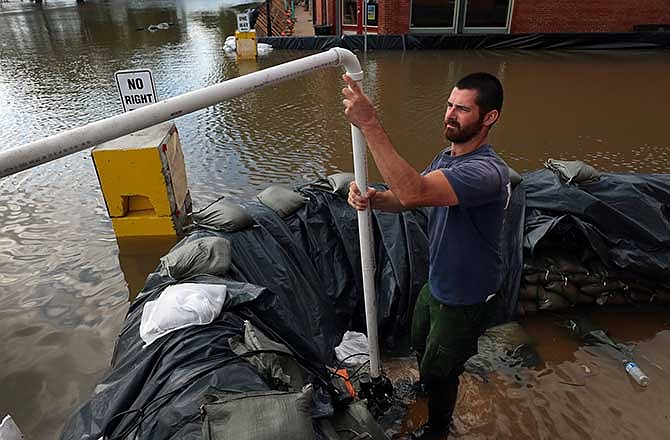ST. LOUIS (AP) - As the rain-swollen Mississippi River carried on its plodding retreat Friday, western Illinois farmer Joe Zumwalt wasn't complaining about the flooding that wound up swamping a hundred or two of his 3,500 river-bottom acres of corn and soybeans.
Zumwalt lost all of it just a few years ago in 2008, when two of the region's levees couldn't hold back the engorged river, ultimately submerging tens of thousands of acres of farmland.
"I think what's happened this year is proof that the levees work," said Zumwalt, 36. "If you stand on the top of the levee and look at the amount of water being held back and the potential devastation that could have occurred, you have to feel pretty good."
The economic toll of Midwest flooding - typical of this time of year - only now is trickling in.
While officials say it's too early to estimate the flood's financial cost, the U.S. Department of Agriculture's Farm Service Agency says at least 383,000 acres of crops have been destroyed and 2 million damaged in Iowa and Illinois alone due to excessive rain, flash flooding, and flooding on the Mississippi River and its tributaries.
Crop damage in Missouri has not yet been reported to the USDA, Farm Service Agency spokeswoman Isabel Benemelis said.
The Federal Emergency Management Agency still is getting preliminary damage assessments from pounding upper Midwest storms that led to the flood, and from the flooding itself, spokeswoman Amanda Bicknell said.
"This is really a moving target," she said.
Buyouts of flood-prone property since the benchmark flood of 1993 - and newer, bigger levees - have limited damage this time around, even though this flood ranked among the 10 highest ever in several locations. Still, the flood has damaged roads and infrastructure, along with scattered homes and businesses.
The flood came at a bad time for farmers, with corn having been flourishing in the nation's midsection and soybean plants still maturing.
Around his fields near Illinois' Warsaw, Zumwalt had cause for jubilance: Crops on just 100 to 200 acres got ruined in the past week or two by Mississippi River water that weaseled its way under the levees. But the levees held, said the Hancock County Farm Bureau's president, and that's all that mattered.
"We're not talking about huge amounts of crop loss," he said. "By and large, the crops in our area look very good."
While retreating Friday in most places, the Mississippi still was 8 feet above flood stage in Grafton, Illinois, a town without a levee about 40 miles north of St. Louis. The river level there was expected to start dropping. Despite its lack of protection, damage there was minimal.
Both bridges closed by the flood have reopened. Traffic resumed Thursday afternoon at the Quincy (Illinois) Memorial Bridge. The Champ Clark Bridge at Louisiana, Missouri, was also open, but with one lane only, said Paris Ervin, spokeswoman for the Illinois Department of Transportation.
Impact of the Quincy bridge closing was minor because the town has two bridges. When the Louisiana bridge closed on Sunday, drivers on U.S. 54 had to go 35 miles north to Hannibal, Missouri, to cross the river.
Link:
Missouri Department of Transportation's Traveler Information Map

